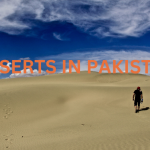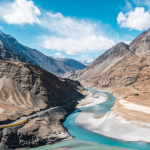Hunza Known as “heaven on earth,” Hunza Valley is true to its reputation and is situated at an elevation of 2438 meters in the north of Gilgit Baltistan.
Hunza is famous for its snow-covered mountains, including the majestic Rakaposhi and Ultar Sar peaks. It’s renowned as a hub for adventure tourism activities like trekking and mountaineering, photography, traditional music and dance, and its rich cultural heritage with historical forts (Baltit Fort & Altit Fort) and traditions.
Hunza Valley is mainly divided into three regions; Upper Hunza, Central Hunza, and Lower Hunza, which are further divided into multiple villages and towns. Historically, Hunza used to be a princely state and remained so until 1974.
Hunza Valley, a mesmerizing area in northern Pakistan, is celebrated for its stunning scenery and vibrant cultural heritage. This picturesque valley is nestled between the Karakoram and Hindu Kush mountain ranges.
This article will guide you through the top attractions, activities, and practical information for an enriching visit to this heaven on earth.
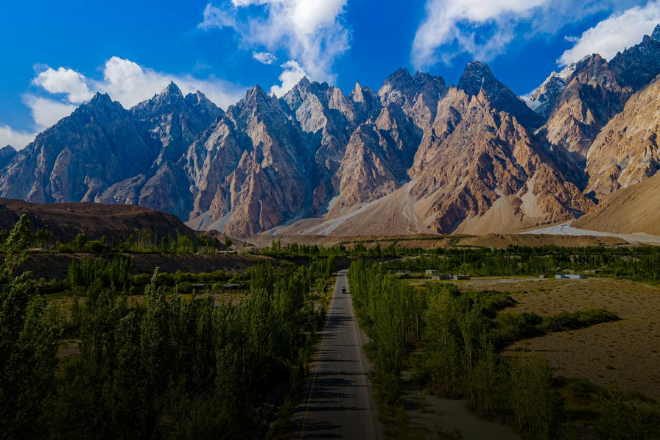
Getting to Hunza Valley
Traveling to Hunza requires the visitor to understand the distance and pack accordingly. For those looking for a quicker route, flights to Gilgit provide a refreshing aerial perspective of the region.
Gilgit airport is 300 km away from Hunza so visitors From Karachi can also choose to fly. The journey from Islamabad to Hunza distance, and Lahore to Hunza distance also has a longer travel time by road.
|
City |
Distance by Road |
Travel Time |
Accessible Route |
|
Islamabad |
Approximately 660 km |
14-15 hours |
Via Karakoram Hwy/N35 |
|
Lahore |
Approximately 1038 km |
18.5 hours |
Via M2 and N35 |
|
Peshawar |
Approximately 760 km |
15-16 hours |
Via N35 |
|
Karachi |
Approximately 2061 km |
31 hours |
Via Sukkur-Multan Motorway / M5 |
|
Gilgit |
Approximately 100 km |
1.5 hours |
Kohistan in KPK / Passu Gojal to Hunza |
Weather Conditions in Hunza
The Hunza weather features distinct seasons, each providing a unique experience.
- Spring (March to May) brings blooming flowers and mild temperatures, making it a pleasant time for sightseeing.
- Summer (June to August) is warm, with daytime temperatures ranging from 20°C to 25°C, ideal for trekking and outdoor activities.
- Autumn (September to November) sees cooler temperatures and vibrant foliage, creating a picturesque landscape.
- Winter (December to February) is cold, with temperatures dropping below freezing, especially at higher altitudes.
The best time to visit Hunza Valley is from May to October, when the weather is most favorable, with temperatures ranging from 15°C to 25°C. This period is ideal for exploring the valley’s natural wonders and engaging in several activities.
Natural Beauty and Scenic Spots
Hunza Valley is renowned for its breathtaking natural beauty, where every corner reveals stunning landscapes and awe-inspiring scenic spots.
Rakaposhi View Point
Rakaposhi View Point, nestled near Karimabad, offers a breathtaking panorama of the majestic Rakaposhi, a 7,788-meter peak. This viewpoint offers a panoramic view of the towering mountain, making it an ideal spot for the Himalayas. The pristine skies and towering peaks set a breathtaking backdrop that captivates the senses.
Attabad Lake Hunza
Attabad Lake Hunza, formed by a landslide in 2010, is a striking feature of the valley with its vivid turquoise waters. The lake’s serene environment, surrounded by steep mountain slopes, offers an ideal setting for boating and leisurely activities. The clear, blue waters of Attabad Lake contrast beautifully with the rugged terrain, making it a popular destination.
Passu Cones
The Passu Cones are a unique series of pointed rock formations that create a surreal and captivating landscape. These cone-shaped peaks rise sharply from the valley floor, adding to the valley’s dramatic and distinctive appearance. They are a favorite among hikers and nature enthusiasts who want to experience the striking geology of the region.
Hunza River
The pristine skies and towering peaks set a breathtaking backdrop that captivates the senses. The river’s tranquil flow and picturesque surroundings enhance the overall vivid beauty of the valley.
The river’s crystalline waters invite strolls along its banks, offering a peaceful contrast to the rugged mountains. The Hunza River adds a touch of serenity to the valley’s dramatic landscape.
Hunza Nagar
Hunza Nagar, a neighboring region, mirrors the natural beauty and cultural richness of Hunza Valley. Known for its breathtaking landscapes and vibrant local culture, Hunza Nagar offers similar eye-catching vistas and classic experiences.
Visitors to Hunza Nagar can explore its charming beauty, including picturesque valleys and historic sites. The region’s rich culture and natural splendor allure explorers venturing beyond its borders.
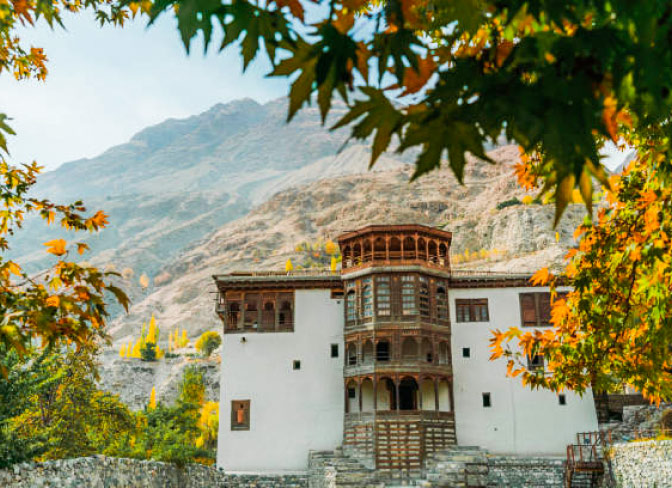
Historical Attractions
Hunza’s historical and cultural sites offer a profound glimpse into the region’s rich heritage. Baltit Fort, a 700-year-old architectural marvel, embodies a proud testament to Hunza’s royal heritage. Visitors can explore the fort’s museum to learn about the local history and the royal family that once lived there.
Nearby, Altit Fort offers another glimpse into Hunza’s past with a history spanning over 900 years. Perched on a cliff, the fort has been carefully restored and provides magnificent views of the surrounding valley.
Ganesh Village Fort is a historic fort located in Ganesh village that dates back several centuries. Visitors can immerse themselves in Hunza’s time-honored architecture and regional heritage through Baltit Fort. The fort provides a unique cultural experience and impressive views of the surrounding landscape.

Culture of Hunza
Hunza Valley is renowned for its rich cultural traditions and vibrant community celebrations. Here are some highlights of its cultural scene:
- Folk Music and Instruments: Hunza’s vibrant music scene features customary instruments like
- damba (drum)
- Sitar
- Surnai (wind instrument).
- Cultural Dances: The Danadi and Alghani dances are authentic to Hunza, showcasing the region’s cultural heritage. However, Danadi is lively and performed during festive occasions, while Alghani is a graceful dance often featured in religious and seasonal festivals.
- Craftsmanship and Handicrafts: The local artisans of Hunza are skilled in creating traditional handicrafts. They are vibrant, reflecting Hunza’s rich cultural traditions, featuring crafts such as:
- Handmade textiles
- Pottery
- Jewelry
- Intricate wood carvings
- Handwoven kilims (rugs)
- shawls
These crafts reflect the valley’s rich artistic heritage and are often available for purchase by visitors.
Traditional Festivals of Hunza:
- Navroz: Also known as the Persian New Year, Navroz is celebrated with vibrant festivities marking the beginning of spring. It involves traditional music, dance, and communal feasts.
- Eid-ul-Fitr: This festival marks the end of Ramadan and is celebrated with special prayers, feasts, and family gatherings. The people of Hunza prepare traditional dishes and sweets for this occasion.
- Independence Day: On August 14th, Pakistan’s Independence Day is celebrated with patriotic fervor. In Hunza, the occasion is marked by flag-hoisting ceremonies, cultural performances, and community events.
- Chilim Jusht: Also known as the “Festival of the Spring,” this festival is celebrated by the local Ismaili community with prayers, cultural dances, and community gatherings.
These festivals are integral to Hunza’s cultural life, showcasing the valley’s traditions and communal spirit.
Traditional Food of Hunza
Traditional food in Hunza reflects the region’s unique culture and natural resources. Some of the notable dishes include:
- Chapshuro: A local meat-filled pastry, similar to a savory pie, often made with minced meat, onions, and spices, encased in a thin dough.
- Pulao: A rice dish cooked with meat, vegetables, and a blend of aromatic spices, providing a hearty and flavorful meal.
- Hunza Bread: A type of unleavened bread, usually enjoyed with tea or as a side to main dishes.
- Grapes and Apricots: Hunza is renowned for its fresh and dried fruits, particularly apricots and grapes, which are often used in various local dishes and snacks.
- Kahwa: A traditional green tea flavored with cardamom, often served with almonds and sometimes sweetened with honey.
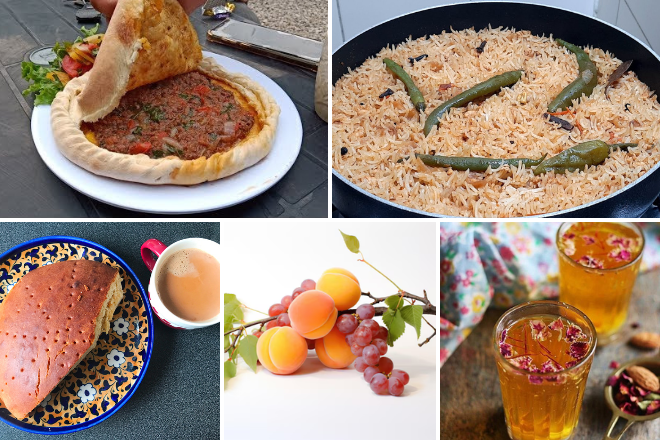
The People of Hunza
The people of Hunza are known for their warmth, hospitality, and strong focus on education. With a literacy rate of around 85%, there is a well-established network of schools. The region’s unique languages, Burushaski and Wakhi, are integral to Hunza’s cultural identity.
Many residents are also fluent in Urdu and English, making it easy to communicate with visitors. They are admired for their striking beauty and robust health, often attributed to their strong genetics and the valley’s healthy lifestyle.
Hunza’s residents are celebrated for their friendly and welcoming nature, frequently going out of their way to make guests feel at home. Their hospitality enriches the cultural experience, allowing visitors to connect deeply with the local way of life. This warm reception ensures that every traveler’s visit is both enjoyable and memorable.
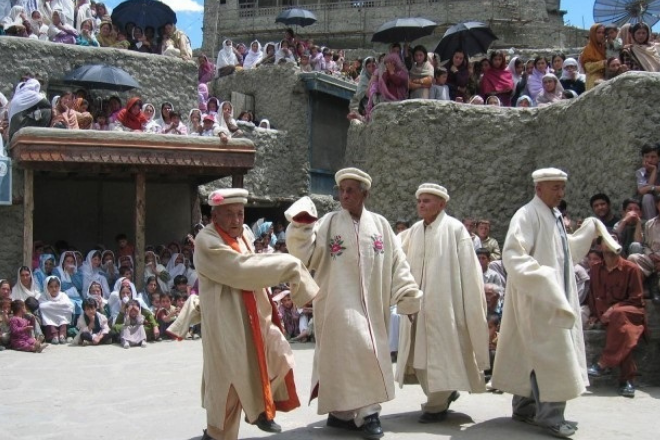
Adventure Activities
Hunza Valley is an adventure lover’s paradise, brimming with thrilling activities.
- For rock climbing, surrounding peaks like Ultar Sar and Ladyfinger Peak or the Hussaini Bridge Hunza is the highest suspension bridge in the world.
- Mountain biking on trails around the Passu Cones and the Husseini Suspension Bridge.
- Boating and fishing at Attabad Lake.
- Paragliding over the Passu Glacier.
- The Karimabad Chairlift offers panoramic views of Hunza Valley.
- Boating and fishing at Attabad Lake.
- Rock climbing and trekking at Passu Cones.
- The Hunza River provides opportunities for scenic riverside walks and tranquil experiences.
- Ancient forts of Hunza, such as Baltit and Altit Fort, offer a glimpse into the region’s rich history.
- Capture the beauty and cultural heritage of Hunza Nagar for your Instagram.
These activities enhance the experience of visiting Hunza Valley, allowing you to fully immerse yourself in the region’s natural beauty and adventure.
Packing Essentials for Hunza
Packing appropriately for your trip to Hunza is crucial for comfort and enjoyment. Essential items include:
- Warm clothing: Even in summer, temperatures can drop, especially in the evenings and at higher altitudes.
- Sun protection: Sunscreen, sunglasses, and a hat are important due to the high altitude and intense sunlight.
- Comfortable footwear: Suitable for trekking and exploring rugged terrain.
- Camera and binoculars: To capture the captivating landscapes and wildlife.
- Travel documents and cash: Ensure you have your ID, any required permits, and enough money, as ATMs can be scarce.
Tips for a Trouble-Free Experience:
- Road Conditions: Winter travel can be challenging due to heavy snowfall and icy roads, especially on the Karakoram Highway; check conditions before traveling.
- Accessibility in Winters: Hunza remains open in winter, but higher-altitude areas may be less accessible due to snow.
- Safety: Use a reliable winter-equipped vehicle, and consider a local guide for safer travel.
- Emergency Contact Number: 97% of emergency rescues can be dealt with by calling 1122.
Conclusion
Hunza Valley’s captivating landscapes, rich cultural heritage, and adventure activities make it a remarkable destination. From exploring ancient forts and enjoying local cuisine to engaging in outdoor adventures, Hunza offers something for every traveler.
For a smooth and enjoyable trip, pack appropriate clothing, learn a few phrases in Burushaski, and consider staying at well-regarded accommodations. With its captivating scenery and warm hospitality, Hunza Valley is sure to leave a lasting impression on every visitor.



